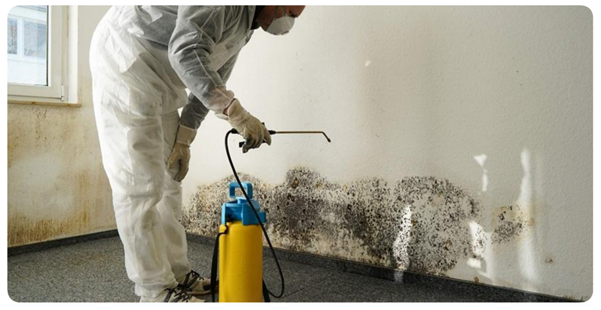Understanding the Benefits of Vacuum-Sealed Packaging
Vacuum-sealed packaging is a method used to store various items by removing air from the package before sealing it. This technique has gained popularity due to its effectiveness in preserving the freshness and extending the shelf life of products. In this article, we will explore the numerous benefits of vacuum-sealed packaging, covering different aspects of its advantages.
Preserving Food Freshness and Quality
Vacuum-sealed packaging plays a vital role in preserving the freshness and quality of food. By removing the air from the packaging, it prevents the growth of mold, yeast, and bacteria, which are the primary causes of food spoilage. This method locks in the natural flavors, aromas, and nutrients of the food, ensuring that it stays fresh for a longer time.
Additionally, vacuum-sealing can prevent freezer burn, which occurs when food is exposed to air in the freezer. Freezer burn can lead to dry, discolored, and unappetizing food. With vacuum-sealed packaging, the food remains protected from the harsh freezer environment, maintaining its texture and taste. Mylar packaging, often used in vacuum-sealing, adds an extra layer of protection. Its durability and barrier properties make it an excellent choice for long-term food storage.
Vacuum-sealed packaging is also beneficial for portion control. By sealing individual portions, you can easily access the exact amount of food you need, reducing waste and ensuring that leftovers remain fresh. This method is particularly useful for meal prepping and planning, as it allows for better organization and management of food supplies.
Extending Shelf Life
One of the most significant advantages of vacuum-sealed packaging is its ability to extend the shelf life of products. This is especially important for perishable items such as meat, cheese, and fruits. By removing the air and creating an airtight seal, vacuum-sealing slows down the oxidation process, which is responsible for food deterioration.
For example, vacuum-sealed meat can last up to three to five times longer than meat stored in traditional packaging. This extended shelf life is beneficial for both consumers and retailers, as it reduces the frequency of restocking and minimizes food waste. It also allows consumers to buy in bulk and store food for extended periods without compromising quality.
In addition to food, vacuum-sealed packaging is used for non-food items such as clothing and electronics. By protecting these items from moisture and air, vacuum-sealing prevents damage and extends their usability. This is particularly useful for items that are not frequently used and need long-term storage.
Saving Storage Space
Vacuum-sealed packaging is an excellent solution for saving storage space. By removing the air from the package, it reduces the overall volume of the items, making it easier to store them in compact spaces. This is particularly beneficial for people with limited storage space, such as those living in apartments or small homes.
For instance, vacuum-sealed clothing can be compressed to a fraction of its original size, allowing for efficient use of closet or drawer space. This method is also useful for seasonal items that need to be stored away for part of the year. Vacuum-sealed bags can fit neatly under beds or in other small spaces, freeing up room for other belongings.
Furthermore, vacuum-sealed packaging is ideal for organizing and decluttering. By keeping items in airtight and compact packages, it becomes easier to manage and locate them when needed. This is especially useful for travelers who need to pack efficiently and save luggage space.
Enhancing Food Safety
Vacuum-sealed packaging enhances food safety by reducing the risk of contamination. The airtight seal prevents external contaminants, such as dirt and bacteria, from entering the package. This is particularly important for raw and cooked foods, as it minimizes the risk of cross-contamination.
Moreover, vacuum-sealed packaging can help prevent the spread of foodborne illnesses. By keeping food in a controlled environment, it reduces the chance of harmful bacteria growth. This is crucial for maintaining the health and safety of consumers, especially in environments where food safety is a priority, such as hospitals and nursing homes.
In addition to preventing contamination, vacuum-sealing can help preserve the nutritional value of food. By protecting food from exposure to air and light, it prevents the degradation of vitamins and minerals. This ensures that the food retains its nutritional quality, providing maximum health benefits to consumers.
Reducing Food Waste
Vacuum-sealed packaging is an effective method for reducing food waste. By extending the shelf life of food and keeping it fresh for longer, it minimizes the likelihood of food being thrown away due to spoilage. This is beneficial for both households and the environment, as it reduces the amount of waste generated.
For example, vacuum-sealed leftovers can be stored for an extended period, allowing you to enjoy them at a later time without worrying about them going bad. This method also enables you to buy food in bulk and store it for future use, reducing the frequency of grocery shopping and minimizing waste.
Additionally, vacuum-sealed packaging can help reduce food waste in the retail and hospitality industries. By extending the shelf life of perishable items, it allows businesses to manage their inventory more efficiently, reducing the need for frequent restocking and minimizing losses due to expired products.
Protecting Against Freezer Burn
Freezer burn is a common issue that affects the quality of frozen food. It occurs when food is exposed to air in the freezer, causing it to become dry, discolored, and tough. Vacuum-sealed packaging is an effective solution for preventing freezer burn and preserving the quality of frozen food.
By removing the air and creating an airtight seal, vacuum-sealing protects the food from the harsh freezer environment. This prevents the formation of ice crystals on the surface of the food, which is the main cause of freezer burn. As a result, the food retains its texture, color, and flavor, even after extended periods of freezing.
In addition to protecting against freezer burn, vacuum-sealed packaging can help maintain the nutritional quality of frozen food. By preventing the loss of moisture and nutrients, it ensures that the food remains healthy and nutritious. This is particularly important for fruits and vegetables, which can lose their nutritional value when exposed to air and light.
Conclusion
Vacuum-sealed packaging offers numerous benefits that make it an essential tool for preserving the freshness and quality of various items. By removing air and creating an airtight seal, it extends the shelf life of food, reduces waste, and enhances food safety. Additionally, it saves storage space, improves marination and flavor infusion, and protects against freezer burn. By supporting sustainable practices and offering convenient and versatile applications, vacuum-sealed packaging proves to be a valuable method for both everyday use and long-term storage.



